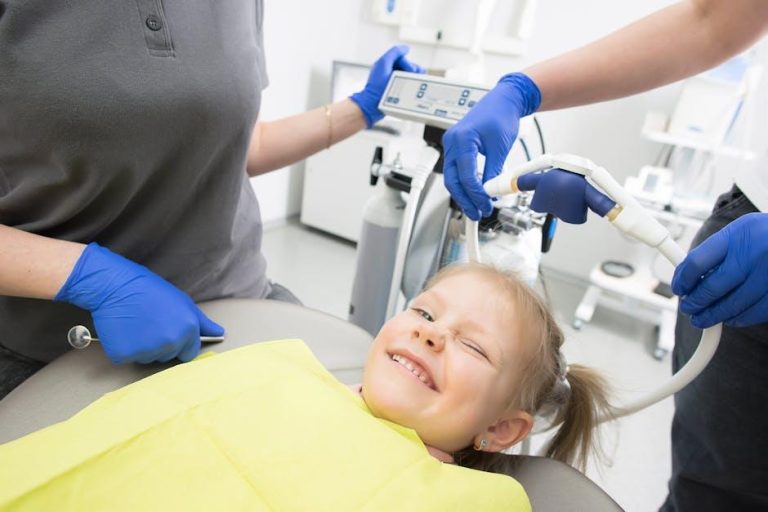
1 in 3 Kids Has Dental Problems, Poll Finds – U.S. News & World Report
Dental health is a vital part of children’s overall well-being, yet new research reveals that a significant number of kids in the United States face dental problems. According to a recent poll reported by U.S. News & World Report, approximately one in three children suffers from dental issues. This alarming statistic shines a spotlight on the growing concern for pediatric oral health and underscores the urgent need for awareness, care, and preventive measures.
Understanding the Poll: What the Numbers Reveal
The U.S. News & World Report cited a comprehensive poll conducted among parents and dental health professionals nationwide. Here’s an overview of the key findings:
- Prevalence: About 33% of children aged 2-12 experience some form of dental problem.
- Common issues: Tooth decay, cavities, gum disease, and enamel erosion were the most frequently reported problems.
- Socioeconomic factors: Children from low-income families were more susceptible to dental issues, highlighting disparities in access to dental care.
- Impact: Untreated dental problems significantly affect school attendance, nutrition, and self-esteem.
Why Are Dental Problems So Common Among Kids?
Dental issues in children have multifaceted causes, ranging from lifestyle choices to broader social factors. Here are some of the main contributors:
1. Poor Oral Hygiene
One of the primary reasons for dental problems is inadequate brushing and flossing habits. Many children lack proper guidance or forget to maintain consistent oral hygiene routines.
2. Diet and Sugar Intake
High consumption of sugary snacks, sodas, and processed foods leads to plaque buildup and cavities. These dietary habits directly contribute to tooth decay.
3. Lack of Regular Dental Visits
Skipping routine dental checkups prevents early detection of oral health issues. Many families avoid dental visits due to cost, fear, or lack of awareness.
4. Socioeconomic Barriers
Children in underserved communities often face limited access to dental care, fluoride treatments, and proper toothpaste, compounding their dental risks.
Common Dental Problems Affecting Children
| Dental Issue | Description | Frequency Among Kids |
|---|---|---|
| Tooth Decay (Cavities) | Damage caused by acid-producing bacteria that create holes in teeth. | Most common |
| Gingivitis | Inflammation of gums causing redness and bleeding. | Moderate |
| Enamel Erosion | Wearing down of the tooth’s protective outer layer. | Increasing |
| Tooth Sensitivity | Discomfort from hot, cold, or sweet triggers. | Common |
Practical Tips for Parents to Protect Children’s Dental Health
Preventing dental problems starts at home. Parents can play a crucial role by adopting simple, effective strategies to promote oral health:
- Establish a Daily Oral Care Routine: Encourage brushing twice a day with fluoride toothpaste and flossing to remove plaque.
- Limit Sugary and Acidic Foods: Reduce consumption of sweets, sodas, and acidic snacks that damage enamel.
- Schedule Regular Dental Checkups: Take your child for dental visits every six months for professional cleanings and early detection.
- Lead by Example: Children imitate parents—maintain your own dental hygiene to inspire good habits.
- Use Child-Friendly Dental Products: Select toothbrushes and toothpaste appropriate for your child’s age for better compliance.
Benefits of Early Dental Care
Investing in dental health from an early age not only prevents problems but also offers additional advantages:
- Improved Overall Health: Healthy teeth reduce risk for infections and systemic diseases.
- Better Self-Confidence: A brighter smile supports social interactions and self-esteem.
- Educational Advantages: Fewer dental-related absences mean better academic performance.
Case Study: How Early Intervention Made a Difference
Consider the story of the Johnson family from Ohio. Their 7-year-old daughter was suffering from recurrent tooth pain and missed several school days. Upon visiting a pediatric dentist, early-stage cavities and gum inflammation were diagnosed. With professional care combined with a consistent home oral hygiene routine, her condition improved dramatically within six months. This case illustrates the critical role of timely dental care and education.
First-Hand Experience: A Parent’s Perspective
Maria Gonzalez, mother of two, shares her journey:
“I didn’t realize how important dental health was until my eldest started complaining about tooth pain. We made it a family priority to brush together every morning and night, cut down on sugary snacks, and visit the dentist regularly. Now, both my kids have healthy smiles, and I feel more confident about their overall well-being.”
Conclusion: Taking Action for Children’s Dental Health
The revelation that 1 in 3 kids has dental problems is a wake-up call for parents, caregivers, and health professionals alike. Preventing dental issues in children requires a proactive approach that combines education, proper oral care, healthy dietary habits, and access to regular dental services. By implementing the practical tips discussed and fostering a supportive environment, we can reduce the prevalence of childhood dental problems and ensure a brighter, healthier future for our children.
Stay informed, stay proactive, and give your child the gift of a healthy smile!


